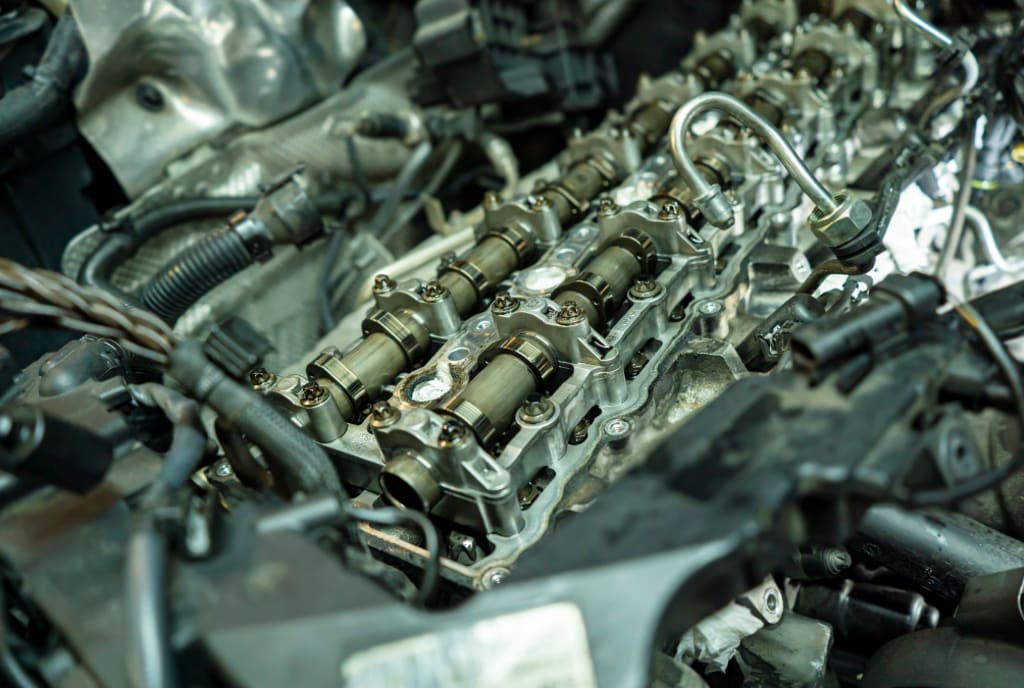How Can Engine Bearing Failure Be Prevented?
Inadequate lubrication, debris, bearing crush, & poor installation are the most common causes of engine bearing failure. Check MOT status of your vehicle & get these faults fixed or essential parts replaced to avoid a MOT failure or, worse, a complete engine breakdown.

The engine bearing has a long service life, and a variety of conditions might cause it to wear out sooner than expected. It appears that getting a correct diagnostic on how to fix a failing bearing is critical. This decreases the cost of future repairs required as a consequence of this and helps it avoid subsequent difficulties.
You should already be aware that if regular maintenance is not performed, the bearing will fail "early." As a result, when something like this happens, it just implies that it happened for reasons that you might have easily averted.
Operational stress, lubrication, environmental effect, and bearing selection are the key factors that can cause several bearing difficulties (spalling, pitting, unique wear patterns, corrosion/rust).
Basic Strategies to Avoid an Engine-Bearing Failure
However, there are a few basic strategies to avoid an engine-bearing failure. They are as follows:
1. Adequate Lubrication
Lubricating bearings properly helps to keep contact surfaces from rolling and sliding. Direct metal-to-metal contact is avoided. This oil film lowers friction and abrasion by reducing friction between the surfaces. Engine bearings are protected from corrosion and rust by lubrication, which extends their service life. When lubricating the bearings, make sure you use the proper grease. Lubrication failure will occur if the improper type of grease is used. Also, avoid using grease that has already been contaminated, since it will cause more issues than it solves. As a result, make every effort to keep the rolling components free of contaminants and foreign objects.
2. Dealing with Material Fatigue
Material fatigue occurs when a bearing's operating temperature exceeds the specified fatigue limit. It's also possible if there's a lot of oil clearance and fuel detonation. However, you may simply avoid this problem and extend the bearing's service life. Choosing a bearing material with a high load capacity is one approach to do so. Another option is to replace or repair the deformed components before closing the watch on the oil clearance. Also, fuel with a high-octane level should be used.
Other useful hints for preventing bearing damage caused by various environmental variables include:
· Using appropriate sealing processes and cleaning procedures to remove dust and grime
· Using a unique sort of seal that does not score the shaft in order to keep water out.
· Insulating the bearing to manage electrolyte corrosion and current passes might result in sparks and bearing pitting.
When Engine Bearings Fail, What Happens?
There will be no friction between the rotary and stationary sections if the engine bearing breaks. In other words, the vehicle will not work correctly, and if you continue to drive in this condition, you will do greater harm.
Silver flakes in the engine oil are one sign of a faulty engine bearing. As a result of the rod knock, you may begin to hear a horrible noise from the engine, and the oil pressure will drop. If the thrust bearing face is damaged, the belts begin to wear down again, and the transmission becomes loud.
Is it possible to replace the main bearings without having to remove the crank?
In certain engines, the main bearing may be removed without removing the crank. You only need to unscrew the fasteners. You must, however, ensure that the crankshaft is not overworked.
However, with other engines, you may not be able to accomplish this. If the crankshaft is also damaged, it is recommended that both the crank and main bearings be removed. The vehicle will run better if both components are replaced.
Engine Bearing Failure: What Causes It?
Engine bearings are critical for a vehicle's smooth operation, and you should make sure they're in good shape. Bearing failure, on the other hand, is caused by a variety of external sources.
So, what goes wrong with crankshaft bearings? The cause of the bearing failure is very obvious to most engine specialists. They only need to carry out a few investigations. If you follow a decent engine-bearing failure analysis guide, you can do it yourself.
Before booking your next MOT testing service, ensure that the issue with the engine bearings is fixed. The reason for this is that not only can this result in an emissions test failure on your next MOT test but can result in total engine failure.
Knowing the actual reason of engine bearing failure can assist you in rapidly resolving the problem. The bearing will not wear out prematurely if it is well maintained. With that in mind, here are some of the most common reasons of engine bearing failure:
1. Debris or Dirt
Dirt or dust may severely harm the surface of an engine bearing. Circumferential scratches on the bearings' surface are caused by dirt and dust in the lubricating system. If you don't clean or change the filter correctly, the dirt or foreign particles will typically persist in the bearing lining. To avoid this problem, it appears that maintaining a regular cleaning routine is critical. If unsure, speak to a trained technician at a garage in Reading for further information. Before you consider reassembling the engine, you should cleanse the lubricating system. If such action is not taken, the bearing will be damaged. Keep an eye out for dirt or other particles caught between the engine bearing back and the housing. The engine bearing is elevated by debris, leading it to be in close contact with the crank journal. As a result, when cleaning, you should endeavour to get rid of all the filth. Make sure you're replacing engine bearings on clean surfaces.
2. Lack of Lubrication
The crankcase requires constant lubrication. The bearing faces seize due to a lack of lubrication. This causes the entire engine to fail, making the vehicle unworkable. To avoid metal-to-metal contact, make sure the bearings are continually adequately oiled. Lack of oil may impact only one bearing at first, but it will gradually affect all of the beatings. Examining the metal of the bearing is one technique to determine whether or not there is a problem. If you detect a gleaming surface, you'll need to lubricate it. For additional diagnostics, keep an eye out for faulty oil pumps, clogged engine passageways, and oil seal failures. Check for incorrect bearing installation/selection, as well as fuel dilution/aeration produced by an overfilled crankshaft.
3. Bearing Crush
When you set the bearing halves in position, you'll see extra material reaching over the bearing housing. With the precise assembly torque, it helps keep the bearing's outer diameter against the housing assembly. The crush reduces the bearing's movement by increasing surface contact with the housing bore. Heat transfer occurs as a result of this, and heavy crush may lower engine consumption by filing down the cap.
4. Incorrect Installation
The installation of the engine bearings is critical, since improper installation can lead to bearing failure. If a half bearing without a hole is wrongly "positioned," the journal will not get lubrication in most circumstances. I'm sure you recall the problems that occur from a lack of oil, right? As a result, it would aid in the prevention of such issues. Similarly, if the rod/main bearing cap is installed improperly, the crankshaft bearing would fail.
As mentioned above, check MOT status of your vehicle and have these issues repaired or necessary parts replaced to avoid a MOT failure or even worse, total engine failure.
About the Creator
Car Services in Reading
Are you looking for a reputable and high-quality car garage in Reading ? Car Services in Reading is your one-stop shop for online garage services in Reading. Book online car repair services with us with confidence.






Comments
There are no comments for this story
Be the first to respond and start the conversation.